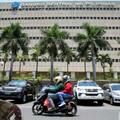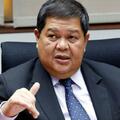MANILA – Philippine Inflation Hits 5-Year High, Raises Prospect of Policy Tightening
Manila. Philippine consumer prices accelerated in April at their fastest pace in at least five years, raising the prospect of monetary policy tightening as early as next week, some economists said.
Bangko Sentral ng Pilipinas Governor Nestor Espenilla said the central bank cannot ignore rising inflation and a policy adjustment “is always on the table.”
“What I am saying is the numbers are higher than the last time, obviously we cannot ignore it,” Espenilla told Reuters when asked if there was a case for a rate increase.
Using 2012 as the base year, the consumer price index rose 4.5 percent from a year earlier, faster than the March reading of 4.3 percent and matching the median forecast of 4.5 percent in a Reuters poll.
The central bank had projected April headline CPI to be within 3.9 percent to 4.7 percent.
Espenilla earlier told reporters that the central bank would determine a “measured response” to halt a buildup in inflationary expectations when policy makers meet, but also noted some of the pick-up in price pressures could be temporary.
“These are relevant factors to consider at the policy review next week in determining the necessity and shape of a measured response to halt potential build up in inflationary expectations,” he said in a phone message.
The Philippines was one of Asia’s fastest-growing economies in 2017, expanding 6.7 percent, on strong domestic demand, exports and government spending and momentum is expected to continue this year.
“The BSP expects inflation…to remain elevated in 2018 and decelerate close to the midpoint of the target range in 2019,” it said in a separate statement on Friday (04/05). The latest inflation number was well above the central bank’s 2 percent to 4 percent target, as well as the January-April average of 4.1 percent.
Espenilla said that while the April inflation figure was on the high side of the central bank’s forecast, seasonally adjusted month-on-month inflation decelerated.
The Philippine Statistics Authority has not disclosed month-on-month inflation data.
He said “expectations seem to be feeding off essentially cost-push price pressures that may be transitory in nature.”
Some economists see price pressures adding to the case for a rate hike at the next policy review on May 10, the same day the government will release first-quarter gross domestic product data.
With inflation surpassing the central bank’s target range and the Philippine economy expanding strongly, “this will put increasing pressure on the BSP to tighten monetary policy with a 25 bps rate hike” at next week’s meeting, said Rajiv Biswas, Asia-Pacific chief economist at IHS Markit.
The central bank’s policy settings have remained unchanged since September 2014, when it raised the key rate by 25 basis points. It set the rate at 3.0 percent in June 2016 when it moved to an interest rate corridor framework.
Inflation based on the old 2006 CPI basket was 5.1 percent, faster than the 4.8 percent reading in March, while core inflation was 5.0 percent, quickening from the previous month’s 4.7 percent.
Reuters / By : Enrico Dela Cruz and Manolo Serapio Jr | on 7:00 AM May 05, 2018 / Category : International, SE Asia / Jakarta Globe











